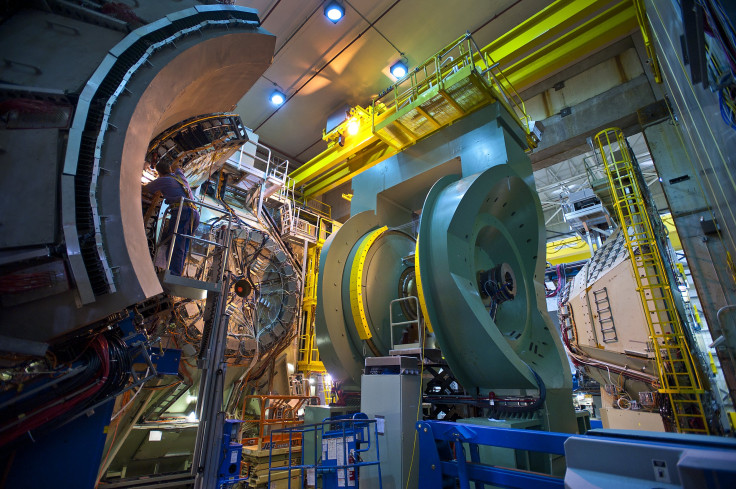Particle Collider Helps Scientists Re-Create Droplets Of 'Primordial Soup'

When the universe burst into existence approximately 13.8 billion years ago, there existed a “primordial soup” composed of a state of matter known as the quark-gluon plasma (QGP). This “quark soup,” which vanished in a few millionths of a second, is predicted to have existed at extremely high temperatures and densities at which regular matter cannot exist.
Now, scientists at the Brookhaven National Laboratory’s Relativistic Heavy Ion Collider (RHIC) -- the second most powerful particle collider on the planet -- have shown that this primordial soup flows like a nearly friction-free “perfect” liquid.
And, although physicists have, in the past, detected this exotic state of matter, the latest study confirms that droplets of this soup can be created through collisions of much smaller particles, such as helium-3 nuclei -- containing two protons and one neutron -- and gold ions.
“These tiny droplets of quark-gluon plasma were at first an intriguing surprise,” Berndt Mueller, associate laboratory director for nuclear and particle physics at Brookhaven, said in a statement. “Physicists initially thought that only the nuclei of large atoms such as gold would have enough matter and energy to set free the quark and gluon building blocks that make up protons and neutrons. But the flow patterns detected by RHIC’s PHENIX collaboration in collisions of helium-3 nuclei with gold ions now confirm that these smaller particles are creating tiny samples of perfect liquid QGP."
The QGP, which was first created at the RHIC in 2005, has since been re-created at CERN’s Large Hadron Collider (LHC). Scientists hope that studying this high temperature soup might help replicate conditions of the Big Bang and provide invaluable insights into the origin of our cosmos.
The latest experiment builds on earlier findings from collisions of deuterons with gold ions at RHIC, and proton-lead and proton-proton collisions at the LHC.
“The idea that collisions of small particles with larger nuclei might create minute droplets of primordial quark-gluon plasma has guided a series of experiments to test this idea and alternative explanations, and stimulated a rich debate about the implications of these findings,” University of Colorado physicist Jamie Nagle, a co-spokesman of the PHENIX collaboration at RHIC, said in the statement. “These experiments are revealing the key elements required for creating quark-gluon plasma and could also offer insight into the initial state characteristics of the colliding particles.”
© Copyright IBTimes 2024. All rights reserved.












